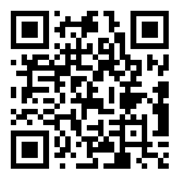Contact lenses have various classifications in terms of production materials, service life, moisture content, center thickness, etc. Due to the large number of lens parameters, more detailed classifications are also made to facilitate wearers to choose according to their needs. Today, we will introduce the types of contact lenses from three common categories: manufacturing materials, usage cycle, and water content.
According to the production materials, contact lenses can be divided into hard contact lenses and soft contact lenses. Hard contact lenses have a harder texture and are less prone to deformation. They can be corrected by changing the shape of the cornea, also known as night wear lenses, and can be worn while sleeping. The texture of soft contact lenses is very soft. Due to their easy shape change and high water content, they are more comfortable to wear right away and do not require a long adaptation time. Soft contact lenses can be divided into hydrogel and silicon hydrogel according to their materials. As can be seen from the name, both materials belong to organic polymer substances, but silicon hydrogel belongs to the upgraded version of hydrogel, and its oxygen permeability is dozens of times that of hydrogel.
According to the usage cycle, contact lenses can be divided into two types: long cycle and short cycle. Traditional lenses have a relatively long usage cycle, such as annual or semi annual lenses, while short cycles include daily or monthly lenses. The shorter the usage cycle, the less protein precipitation may accumulate, making it healthier. If possible, the editor suggests choosing short cycle contact lenses. Daily disposable contact lenses, also known as disposable contact lenses, are currently a safe and healthy type of contact lens.
According to the moisture content, 30% -50% are low moisture contact lenses, 50% -60% are medium moisture, and over 60% are high moisture. The higher the water content of contact lenses, the higher the moisture content of the lenses, making them more comfortable to wear. However, its disadvantage is that the evaporation rate of water is faster, which can easily cause dryness in the eyes, making it unsuitable for people with dry eyes.






